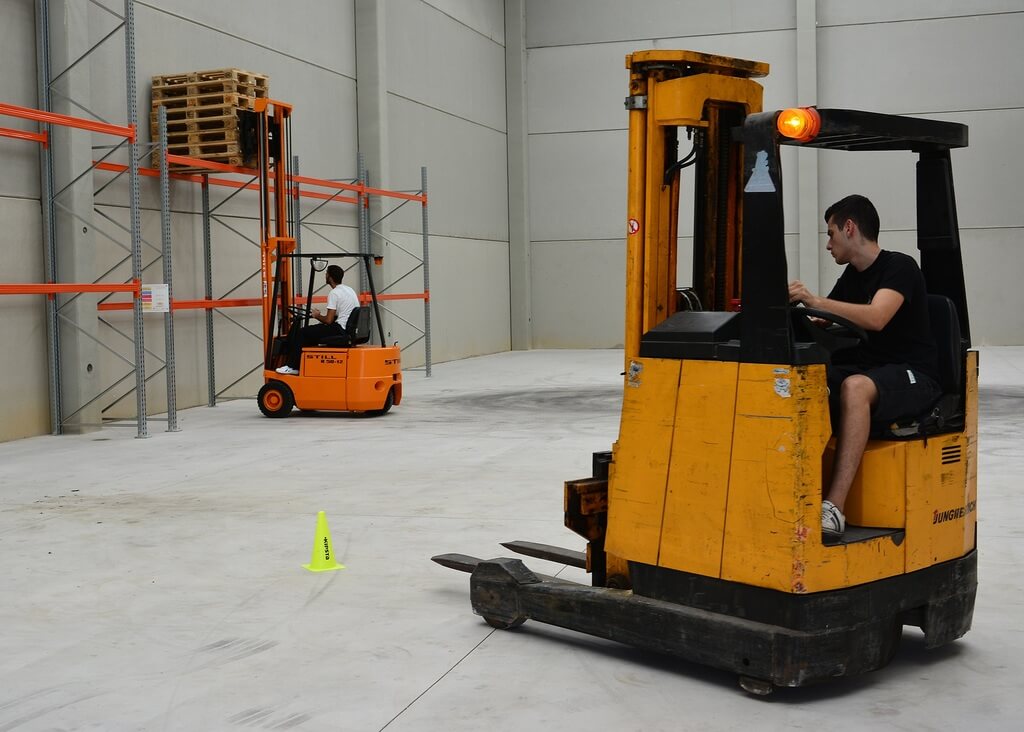The common forklift terms are lift truck, jitney, forklift truck and fork truck. A forklift is an industrial vehicle that lifts things with a two-pronged forked front attachment. That material is frequently shown on a wooden platform or pallet. There are a lot of forklifts for sale which are fully functional.
Products and commodities on a pallet or other platform are frequently moved with forks. A forklift can lift and lower materials. The forklift, unlike other machines that can be connected with a forked attachment, such as a telehandler, is useful for undertakings that require a lot of material movement.
Mishaps happen, especially during the movement. And you should be aware of common dangers so that you take precautions. That’s why we’ve come up with five common forklift dangers and ways to avoid them.
- Improper Use and Operation
Speeding, racing or sharp turning while operating a forklift poses a major risk to operators, loads and the forklift itself. Accidents, such as collisions or unit tip-overs, which can result in injuries, fatalities, and product and equipment damage, are much more likely to occur if you operate in a rough manner.
Perhaps you’ve purchased a used forklift from a sale. Or maybe you’ve invested in a new one. Whatever the case may be, you should use it for the purpose for which they were developed and engineered - lifting and manoeuvring palletised and large products safely. Attempting to utilise the forklift for unwanted objectives or using it roughly can dramatically increase the risk of an accident. - Overloading
The manufacturer rates each forklift in terms of its ability to safely lift a maximum load limit. Overloading a forklift beyond its maximum safe load limit can be dangerous. When a load is lifted by the tynes, it loses its stability, increasing the risk that the load may fall and the forklift will tip over, endangering the operator and potentially injuring the load and forklift.
Unsecured loads can cause serious injury or damage. If they fall off the tynes or the forklift tips over, it will increase the risk of accidents. - Incorrect Maintenance
A forklift that is not properly maintained increases the likelihood of an accident. Broken lights, malfunctioning alarms, worn tynes, torn chains and fluid leaks are just a few of the issues that might arise if you don’t maintain the forklift properly. You can commonly see in electric forklifts purchased from sale and not maintained or serviced properly.
If you face any issues, you should label the forklift out and do not operate it until everything has been fixed. The easiest method to ensure that forklifts are frequently examined and maintained to keep them in top working order is to put them on scheduled maintenance regimens. - Overhead Barriers
Forklifts can also be harmed by overhead barriers such as mezzanine levels and low-hanging entrances. If the tynes on a load are raised too high, a collision with obstruction may occur, resulting in damage to the load, forklift or overhead obstruction.
To reduce the risk of overhead collisions, you should transport all cargo with the forklift tynes lowered to a low height above the ground. Even you should inform the operators of the forklift about the total decreased height via the rating plate. Additionally, labeling the clearance levels of mezzanine levels and openings can help operators handle the forklift. - Blind Areas
When operating a forklift purchased from the sale, blind spots are risky because unexpected hits can result in catastrophic injuries. An operator's perspective is impeded when the system is completely loaded. Bad vision caused by poor lighting or weather circumstances, such as rain, can make it difficult for forklift operators to see.
Pedestrians must be steered away from strolling or working in a forklift's blind zones to reduce the danger of collision. When hauling huge loads, plan the driving routes to avoid blind spots, obstacles and other hazards. Additionally, you should use spotters when maneuvering around blind spots.









No comments:
New comments are not allowed.